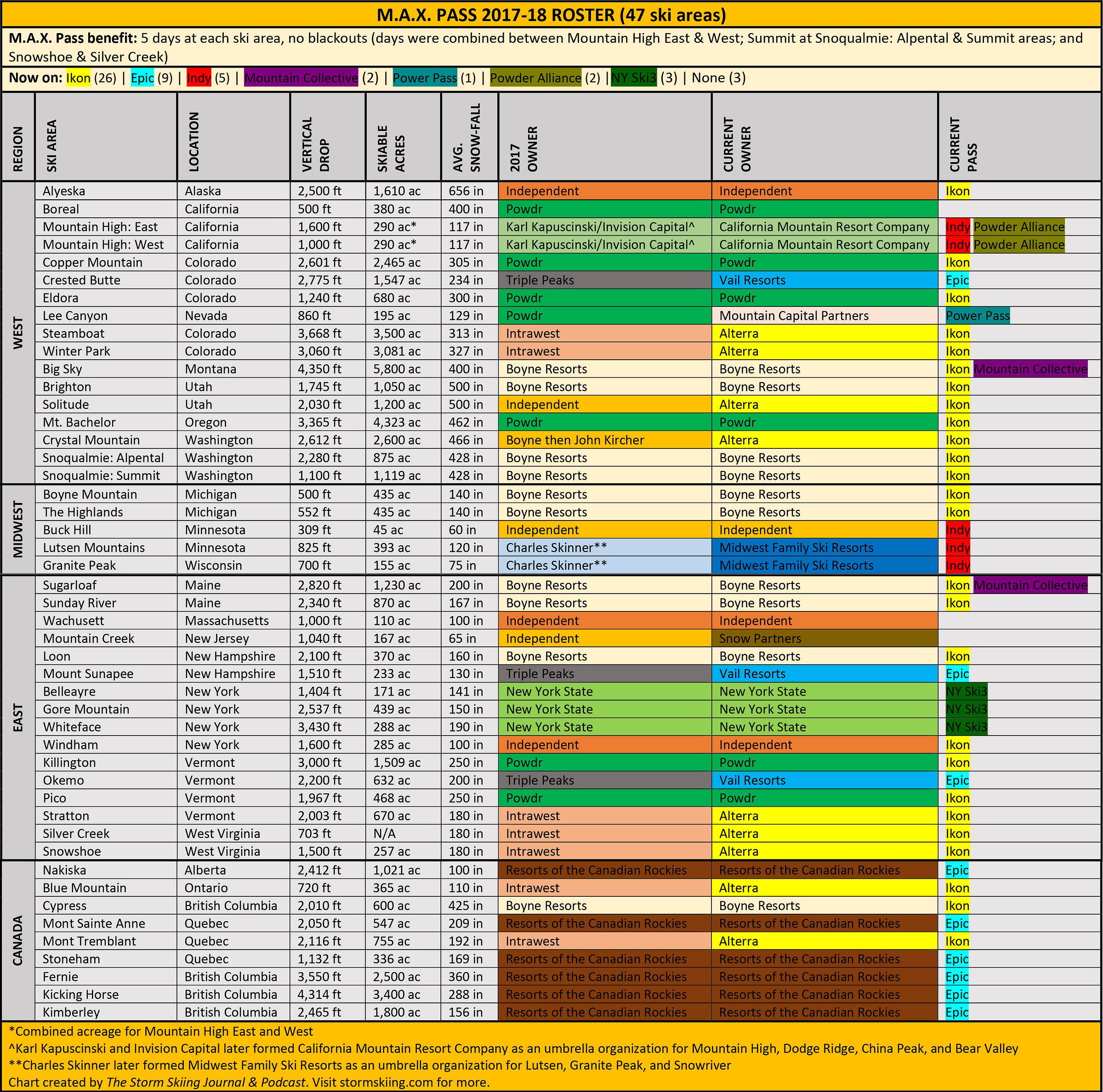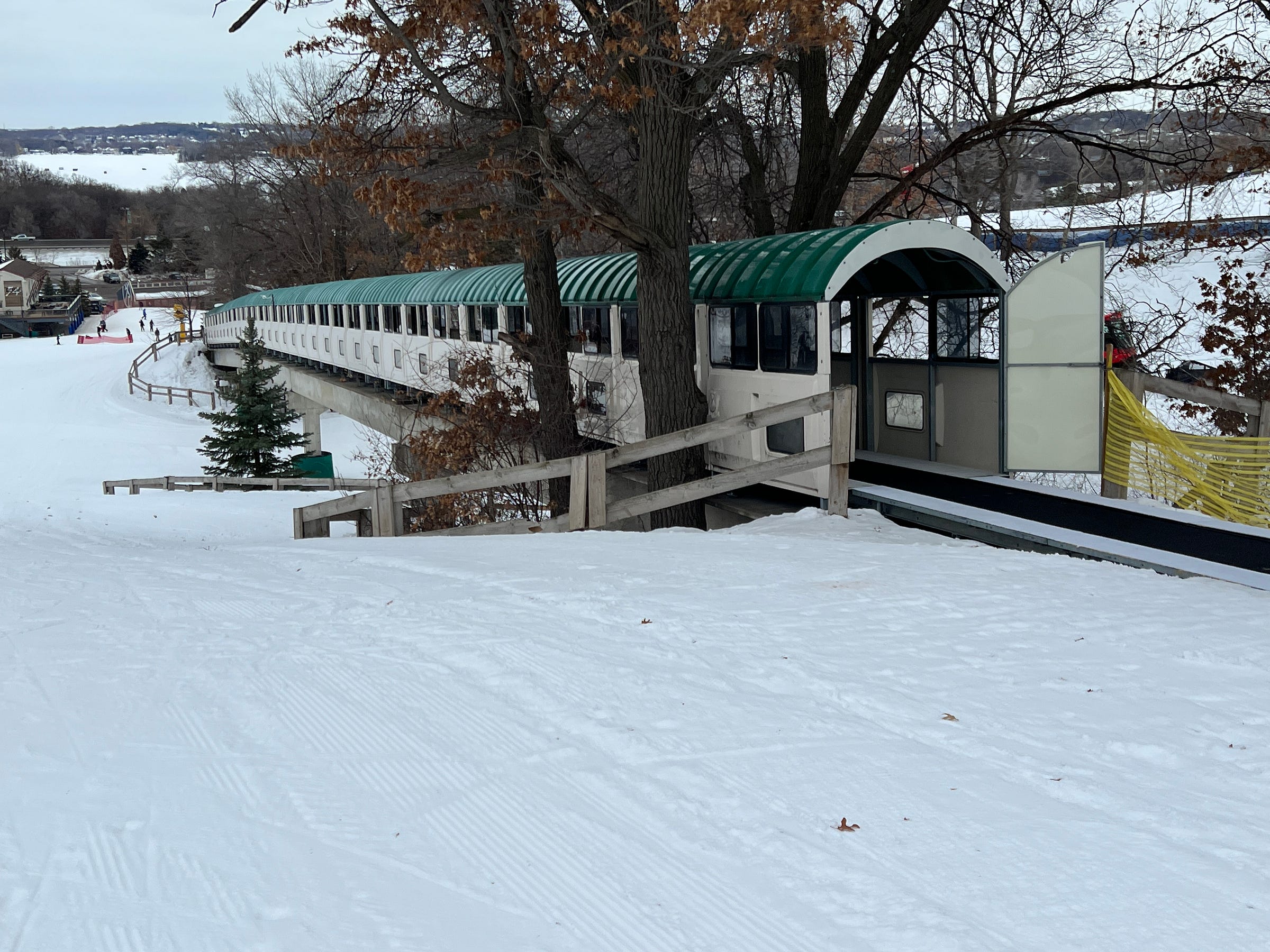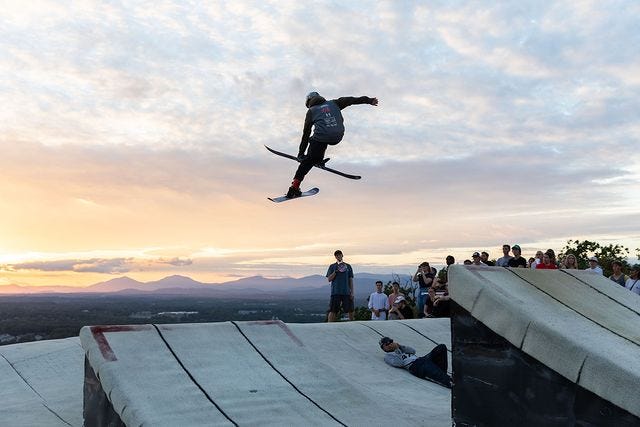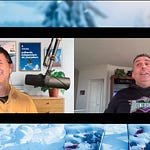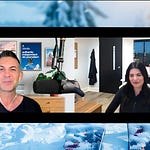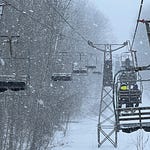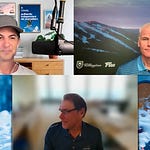Who
Nathan Birr, Chief Operating Officer of Buck Hill, Minnesota
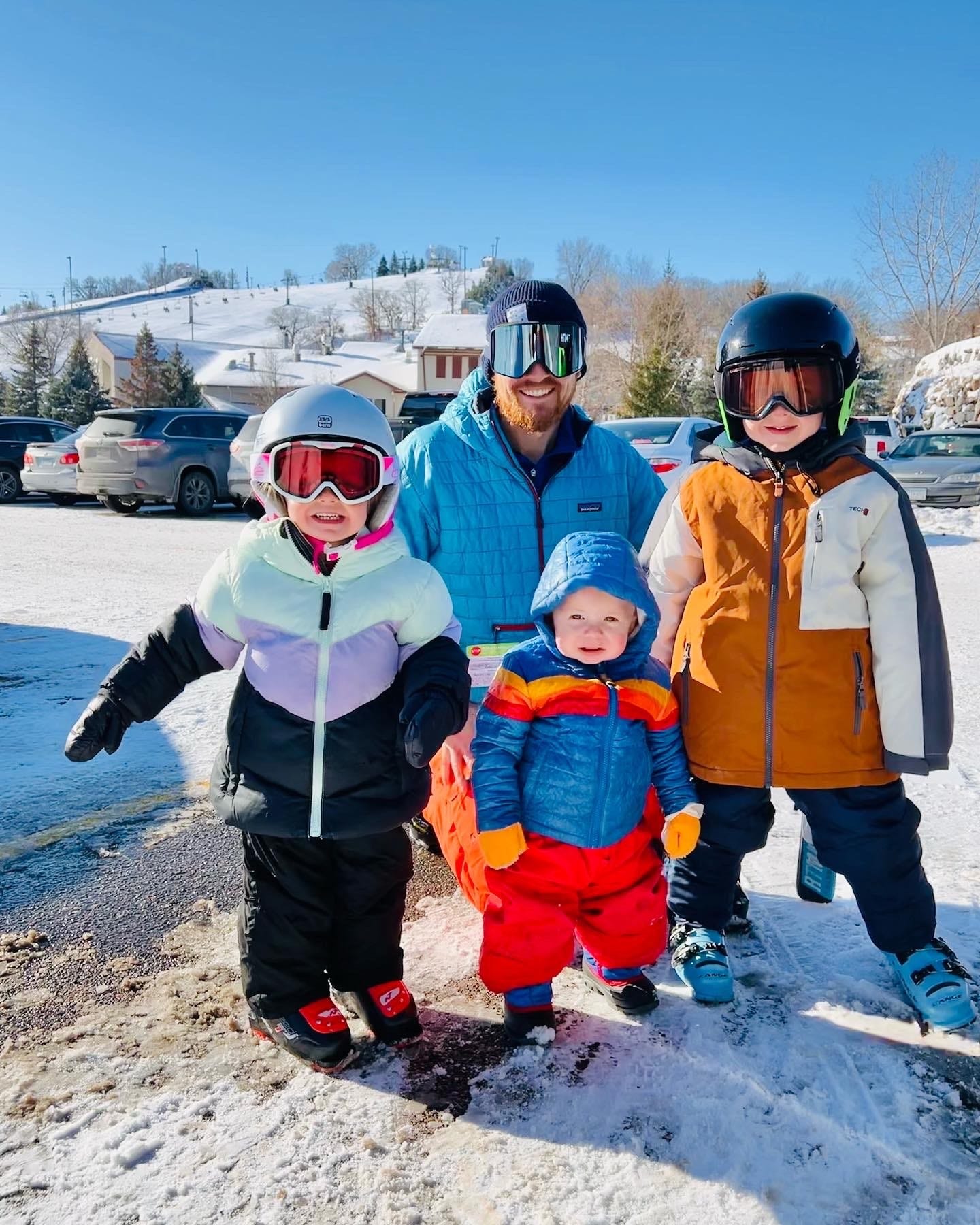
Recorded on
January 26, 2024
About Buck Hill
Owned by: David and Corrine (Chip) Solner
Located in: Burnsville, Minnesota
Year founded: 1954
Pass affiliations:
Indy Base Pass – 2 days with 16 holiday blackouts
Indy+ Pass – 2 days with no blackouts
Closest neighboring ski areas: Hyland Hills (:21), Como Park (:33), Afton Alps (:41), Elm Creek (:43), Welch Village (:46)
Base elevation: 919 feet
Summit elevation: 1,225 feet
Vertical drop: 306 feet
Skiable Acres: 45
Average annual snowfall: 60 inches
Trail count: 14 (2 most difficult, 6 intermediate, 6 beginner), 4 terrain parks
Lift count: 9 (2 fixed-grip quads, 1 triple, 4 ropetows, 2 conveyors - view Lift Blog’s inventory of Buck Hill’s lift fleet)
View historic Buck Hill trailmaps on skimap.org.
Why I interviewed him
Buck Hill rises like a ludicrous contraption, impossible there in the Twin Cities flatlands, like the ski resort knotted into Thneedville’s inflatable glades and shirt-sleeve clime (1:25):
How did it get there? What does it do? Did someone build it? At first, I thought someone must have, like Mount Brighton, Michigan. But no. The glaciers made it, a gift to the far future as these ice walls retreated and crumbled. It is the highest point for 200 miles in any direction.
Before skiing, Native Americans used the hill as a vantage to stalk deer drinking from Crystal Lake. Thus the name. It has probably been “Buck Hill” for hundreds of years. Maybe thousands. Now the lake is covered in ice-fishing shanties all winter, and the hill is hemmed in by an interstate on one side and housing developments on all the rest. And the hill, 45 acres of fall line that erupts from seemingly nowhere for seemingly no reason, is covered with skiers.
Good skiers. I am enormously fond of the Midwest’s blue-collar ski scene, its skiers on rental gear in hunter-orange jackets, rat-packing with their buddies as a hootalong thing to do on a Wednesday night. This does not exist everywhere anymore, but in the Midwest skiing is still cheap and so it still does. And these rough fellows dot the slopes of Buck. But they don’t define the place like they do at Spirit or Nub’s Nob or Snowriver. Because what defines Buck Hill is the shin-guard-wearing, speed-suit wrapped, neon-accented-even-though-neon-has-been-over-for-30-years squadrons of velocity-monsters whipping through plastic poles drilled into the snow.
It can be hard to square smallness with might. But England once ruled half the world from a nation roughly the size of Louisiana. Some intangible thing. And tiny Buck Hill, through intention, persistence, and a lack of really anything else to do, has established itself, over the decades, as one of the greatest ski-race-training centers on the planet, sending more than 50 athletes to the U.S. Ski Team. Credit founders Chuck and Nancy Stone for the vision; credit confused-upon-arrival Austrian Erich Sailer (“Where’s the hill?” he supposedly asked), for building the race program; credit whatever stalled that glacier on that one spot long enough to leave us a playground that stuck around for 10,000 years until we invented chairlifts. Buck is a spectacular amalgam of luck and circumstance, an improbable place made essential.
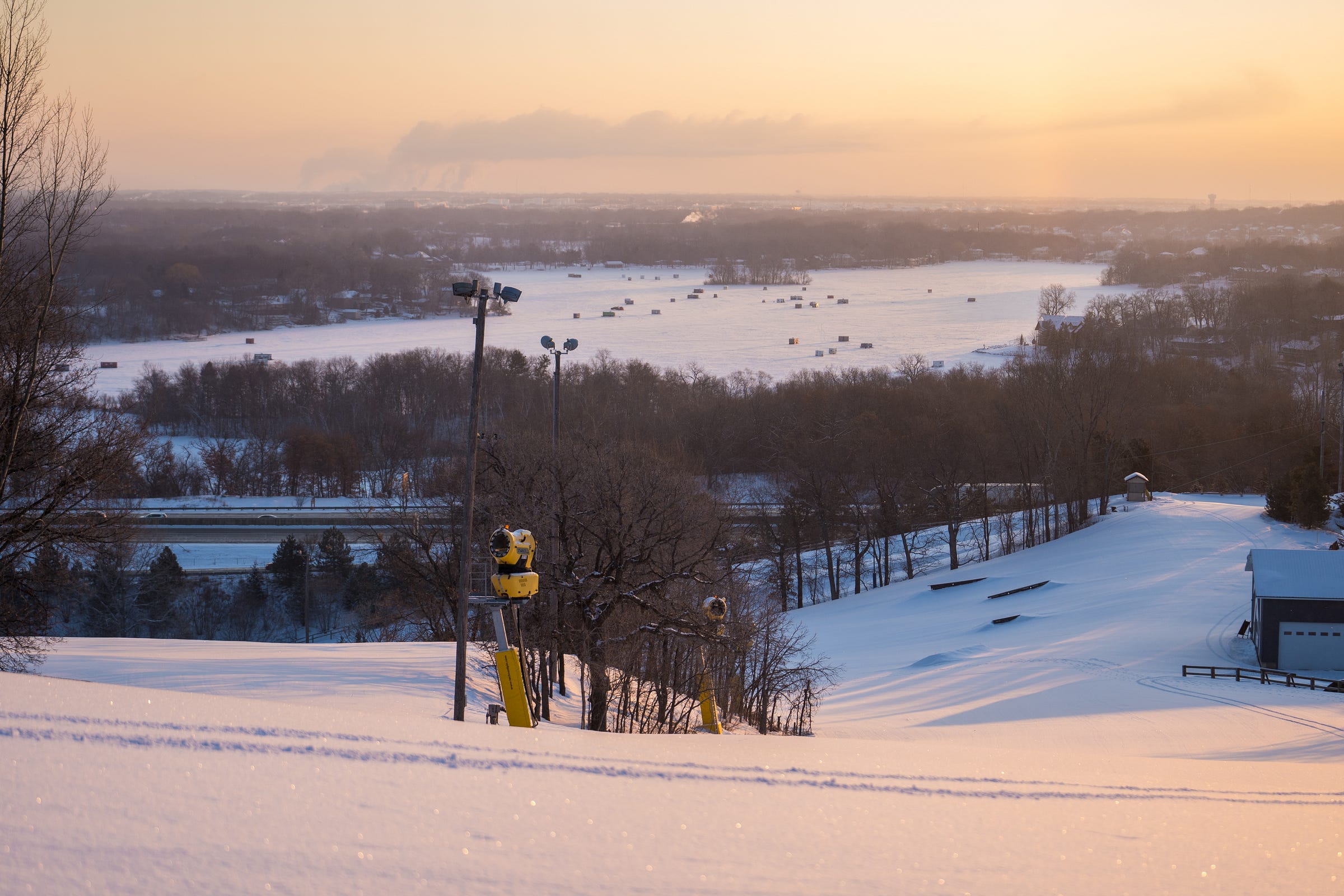
What we talked about
Buck Hill’s brand-new quad; party up top; the tallest point in 200 miles; Chuck and Nancy Stone, who started a ski area on a farmer’s pasture; a glacier’s present to skiers; the hazards of interstate-adjacent snowmaking; why the resort’s founders and long-term owners finally sold the bump in 2015; Erich Sailer and Buck’s incredible ski racing legacy; Lindsay Vonn; a perfect competition center sitting just outside of 3 million front doors; experiments in year-round skiing; the lift fleet; taming the electric bills; Buck’s Great Parking Puzzle; the Indy Pass; why Buck chose Indy Pass over Ski Cooper; and $49 for a weekend lift ticket.
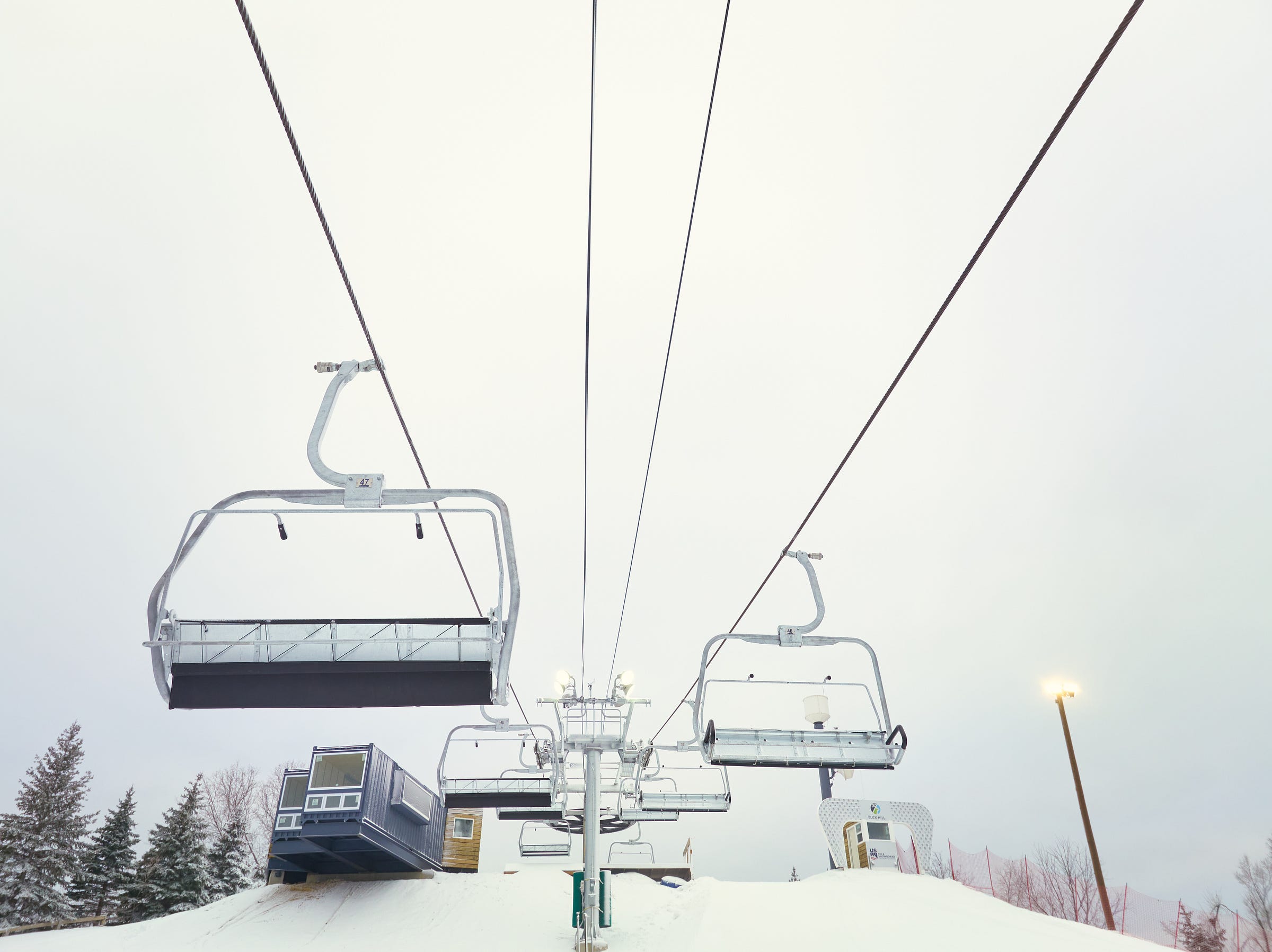
Why I thought that now was a good time for this interview
A skier dropping into Minneapolis-Saint Paul International Airport can find skiing within half an hour in any direction. East to Vail-owned Afton Alps, north to city-owned Como Park, west to Hyland Hills and what are perhaps the fastest ropetows in America. I chose south, to Buck Hill, on a sunny Sunday last February.
It was a mistake. I circled the parking lot, then circled the neighborhood beside the parking lot, then circled the parking lot again. Nothing. So I drove to Welch Village, where people on the chairlift kept asking, in a borderline accusatory way, why I would travel to Minnesota from New York, on purpose, to ski.
The answer is that I value novelty and quirk more than brand-name and stoke (at least when it comes to ski areas; as an adherent of both Taco Bell and Miller Lite, I have a Basic Bro Deluxe side as well). But also because I have this ski newsletter and podcast, whose vitality is based at least in part on a commitment to examining the entirety of American skiing.
I made it back to Buck Hill on Thursday, my last stop before I boarded my flight home to LaGuardia. This time, I parked without issue. I was in no mood for a challenge, and Buck Hill was in no position to offer one. Sightseer skiing. I cruised around and watched the park kids and the racer kids and the little kids trickling in after school. It felt like stumbling into a gymnasium with basketball practice on one court and volleyball practice on the next one and track practice on the elevated lanes above. In other words, not like any version of skiing I had ever seen before. It felt purposeful, focused, deliberate; the opposite of the improvisational exploratory sort of wandering that anchors my own skiing.
All of which makes complete sense to anyone indoctrinated to the Buck Hill Way. But I’d gone in blind, poking the nearest ski hill into the GPS and seeing what turned up. It turned up something pretty special, and I wanted to get the full story.
Questions I wish I’d asked
I’d meant to get into Birr’s new blog, “Notes from Nate.” Check it out here.
What I got wrong
I suggested that Wilmot, Wisconsin was a manufactured hill, like Mount Brighton, Michigan (which is made of landfill from the construction of two nearby freeways, I-96 and US 23). This is incorrect: Wilmot’s 194 vertical feet are the result of the same glaciation process that formed Buck Hill.
Why you should ski Buck Hill
I have never seen anything like Buck Hill. I have seen ski areas with race courses and terrain parks and mogul fields, of course, because most ski areas have most of these things. But until I pulled into Buck’s parking lot last February, I had never seen these things stacked side-by-side, end-to-end, with such deliberate precision, like crops rowed along a hillside. The halfpipe has its own lift. The terrain park has its own lift. The race course has its own lift. The mogul run has its own lift. These are a combination of chairlifts and high-speed ropetows, utilitarian machines with a workmanlike purpose: pump athletes up the hill hundreds of times in a row.
It’s less mechanized than I’m making it sound. Like a coffee shop that can sometimes host evening concerts, Buck Hill takes many forms. And despite the racer troops constantly bunching around all parts of the hill, Buck is often just a bunch of people sitting around drinking lattes. I free-skied there for a few hours without getting yelled at, which frankly is less common than you would think, given my general curiosity and willingness to loosely interpret ambiguous signage. But the fall lines are steady and consistent. Looker’s right hosts a fabulous beginner area, with an incomprehensibly long carpet that rides into a tunnel and over a bridge. I rode it just for fun.
I can’t say that the skiing is terribly interesting. Buck lacks the rollicking nooks and crannies of nearby Afton Alps and Welch Village. It’s so small that I imagine it being a first-hand-up candidate if we ever start panic-converting our outdoor ski areas into indoor ones. There’s just not a lot to do or explore. But one of the most common mistakes we make as skiers is trying to wish a ski area into something it can never be. This is why so many New Yorkers refuse to ski New England after taking that first trip west. But they’re missing so much of what Vermont is by obsessing over what it is not.
Buck, rote, repetitive, and tiny, is exactly perfect for the market it serves: beginners, racers, freestylers, and their families. All the on-hill hubbub can make it hard to hang out, but find a moment to linger at the summit, to gaze at the frozen lake below, at the placid Midwest rolling off into forever. It’s not the greatest ski area you’ll ever find, but it is a singular, spectacular place in a very specific way. If you can find a parking spot.
Podcast Notes
Here’s a little feature on Buck Hill from Minnesota Bound
Another from Midwest skiers
On the Solners
I kept referring to “things the Solners said they wanted to do” when they bought Buck Hill back in 2015. I mined that info from various sources, but this article from Hometown Source is a good overview:
[The Solners] envision a year-round business with plastic slopes for warm weather, an indoor training center, a mixed-use entertainment and retail development beneath floors of hotel rooms, and a hilltop restaurant and banquet center reached via “chondola.”
“It’s a combination of chairlift and gondola,” said Don McClure, who’s worked at Buck Hill for 40 years. …
The first piece may be laying a plastic “dry slope” product called Neveplast on part of the hill. Lessons, clinics, team training and general recreational use could be extended year-round.
Solner said dry slopes haven’t caught on widely in North America, though he skied on a plastic jump in his hometown of Middleton, Wisconsin.
A training gym with indoor ramps and foam pits is also envisioned. Solner said he saw one a couple of years ago in Colorado. He later approached McClure with the idea, and “conversations led to where we are today,” Solner said.
The owners also envision a microbrewery, coffee shop and retail stores, with a hotel above the ground-level uses.
Outdoor concerts are part of the plan, with an amphitheater of about 1,500 seats — the size of the Minnesota Zoo’s.
On Erich Sailer
While transforming Buck Hill into an internationally renowned racing center was the vision of founders Chuck and Nancy Stone, it was Erich Sailer who actually executed the transformation. Here’s an excellent video on his legacy:
On the M.A.X. Pass
I’ve written often about the M.A.X. Pass, which Ikon mercilessly crushed beneath its Godzilla feet in 2018. The partner list was just terrific:
On founder Nancy Stone’s Buck Hill history book
Mrs. Stone’s book is called Buck Hill: A History, Let’s Give It a Whirl. I can’t find a print edition for sale anywhere (perhaps they sell it at Buck Hill).
On snowmaking and proximity to the freeway
Birr sent me this photo of the warning signs MDOT lights up on Interstate 35 when Buck Hill is making snow:
On Lindsay Vonn
The Olympic gold medalist’s fondness for Buck Hill is well-documented. The feeling is mutual – the ski area dedicated a ropetow to its most famous alum in 2019:
The world may know her as Lindsey Vonn, but the Minnesota community that watched her grow into one of the greatest ski racers in history still remembers little Lindsey Caroline Kildow climbing up Buck Hill’s simple rope tow. Vonn, the daughter of a local ski racer Alan Kildow, got her own racing start at the Burnsville ski area at a young age. Patrons remember seeing her soaring down the hill when she was only 2 years old, and just five years later she began riding up the rope that will now bear her name.
On September 23rd, at her home hill of Buck Hill, in Burnsville, Minn., Lindsey's ascent to the top of her sport was recognized formally, with the official naming of "Kildow's Climb" rope tow. "All of us at Buck Hill are very happy and excited to honor Lindsey by renaming our lift on the race training hill in her name," said Dave Solner, owner of Buck Hill.
September 23 was also declared “Lindsey Vonn Day” in Burnsville, Minn.
"Obviously being from Buck is not the most likely of paths to become Olympic downhill champion, but I think I proved that anything is possible" said Vonn at the ceremony. "So, for all of you kids that are still racing here, just keep believing in yourself and anything is possible. And listen to Erich (Sailer), even though he's not always around anymore, but he's probably still yelling from somewhere. I wanted to name the rope tow after my family. My grandfather was the one who taught us how to ski. He built a rope tow in Wisconsin, and started my dad skiing, and the whole family. Then my dad taught me, and Erich taught my father and taught me. Kildow is my family name, and I wanted my family name to stay here at Buck, so 'Kildow's Climb' is here to show you that anything's possible."
On that long magic carpet
Man this thing is so cool:
On the concentration of ski areas around the Twin Cities
I’ll reset this chart I put together for the Trollhaugen podcast last year, which shows how densely clustered ski areas are around the Twin Cities:
On warm-weather outdoor skiing
We talk a bit about Buck’s experiments with warm-weather skiing. There’s actually a whole year-round ski area at Liberty University in Virginia that’s built on something called Snowflex. I don’t count it in my official ski areas inventory because there’s no snow involved, but it’s pretty neat looking. Kinda like a big skate park:
On energy efficiency
We talk a bit about Buck Hill’s energy-efficiency initiatives. This Dakota Energy profile breaks down the different elements of that, including snowmaking and lighting efficiency.
On In Pursuit of Soul II
Produced by Teton Gravity Research, In Pursuit of Soul II features Buck Hill and seven other Midwest ski areas: Lutsen, Granite Peak, Nordic Mountain, Tyrol Basin, Little Switzerland, The Rock Snowpark, and Caberfae Peaks. It’s awesome:
On the Ski Cooper controversy
Birr and I briefly discuss Buck Hill getting caught in the crossfire of an Indy Pass/Ski Cooper dispute. I’m not going to reset the whole thing here, but I wrote two long articles detailing the whole fiasco over the summer.
The Storm publishes year-round, and guarantees 100 articles per year. This is article 9/100 in 2024, and number 509 since launching on Oct. 13, 2019.






